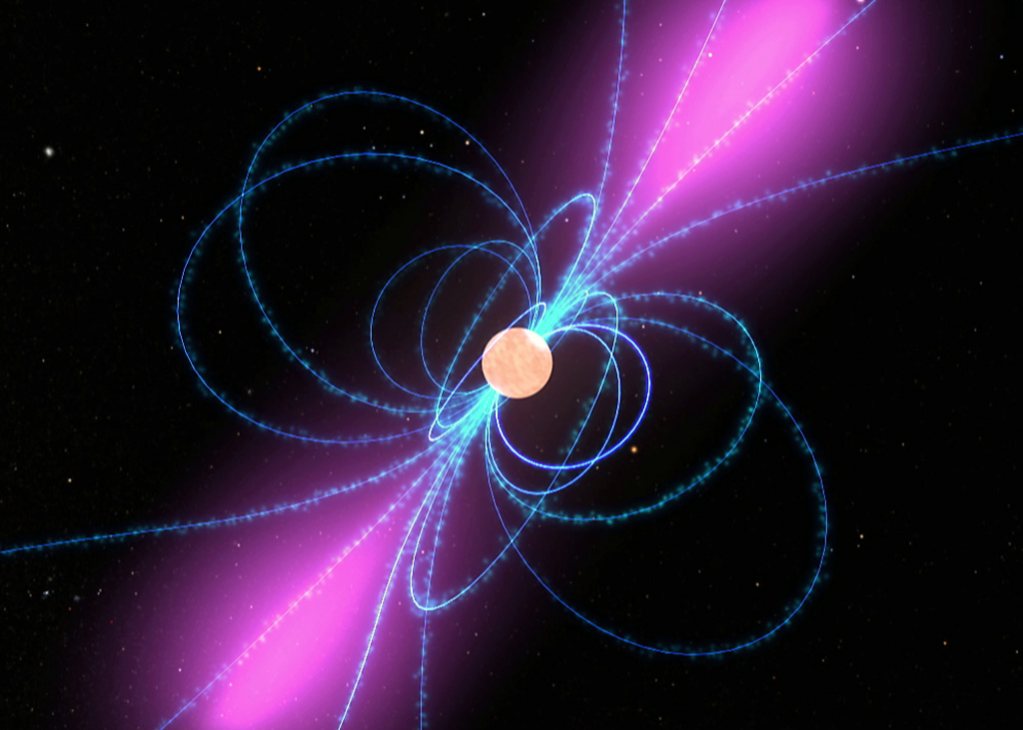Using a set of ground-based radio telescopes, an international team of astronomers has observed a slowly-spinning pulsar known as PSR J0901−4046. Results of the observational campaign, published on the arXiv preprint server, deliver important insights into the evolution of this pulsar.
Introducing PSR J0901−4046: A Record-Breaking Slow Spinner
Located some 1,300 light years away, PSR J0901−4046 is an ultra-long period pulsar discovered in 2020 with the MeerKAT radio telescope. Its spin period of approximately 75.88 seconds makes it the slowest-spinning pulsar among the known neutron star pulsars.
The Magnetar Puzzle: Contradictory Characteristics
Previous studies of PSR J0901−4046 have found that it has a surface magnetic field strength at a level of 130 trillion Gauss and that the pulsar displays unusual temporal behavior. Such a strong magnetic field suggests that it may be a magnetar. However, magnetars are commonly young, while PSR J0901−4046 is estimated to be 5.3 million years old. Moreover, PSR J0901−4046 is not visible in X-rays and gamma-rays as magnetars most often are.
New Investigations to Uncover its True Nature
A group of astronomers led by Mechiel Christiaan Bezuidenhout of the University of South Africa decided to investigate the true nature of PSR J0901−4046. For this purpose, they employed MeerKAT, Murriyang radio telescope, the Giant Metrewave Radio Telescope (GMRT) and the Murchison Widefield Array (MWA).

Key Findings: Timing Stability and Spectral Analysis
The observations found that the timing solution of PSR J0901−4046 has been highly stable since its discovery in 2020—no anomalous timing behavior has been observed, and the root-mean-square (RMS) of the timing model is minimal compared to the pulse period. According to the astronomers, this may indicate that despite the presence of structural modulation, the pulse envelope of this pulsar is very stable from pulse to pulse.
“This stability over a long period of time is contrary to the typical behavior of magnetars, which are characterized by frequent outbursts and associated timing glitches, as well as drastic changes in the spin-down rate,” the researchers noted.
Furthermore, the study found that PSR J0901−4046 has a significantly flatter average spectrum compared to regular radio pulsars over a wide range of frequencies. However, its spectrum is still steeper than what has been observed in radio-loud magnetars.
Detailed Pulse Characteristics and Magnetospheric Clues
The observations also detected two distinct quasi-periodic oscillation modes in single pulses of PSR J0901−4046, with characteristic time scales of 73 and 21 milliseconds. In addition to this, a statistically significant change in the relative prevalence of distinct pulse morphologies was identified compared to previous observations. This may point to a shift in the magnetospheric composition over time.
When it comes to the width of the averaged pulse of PSR J0901−4046, the study found that it remains steady over a wide frequency range. PSR J0901−4046 also has an extremely narrow duty cycle of about 1.4 degrees. This is similar to duty cycles of other radio pulsars with periods longer than five seconds than to duty cycles of the known radio-loud magnetars, which are usually about 15–190 degrees.
Reference: M. C. Bezuidenhout et al, Slow and steady: long-term evolution of the 76-second pulsar J0901$-$4046, arXiv (2025). DOI: 10.48550/arxiv.2505.04430
